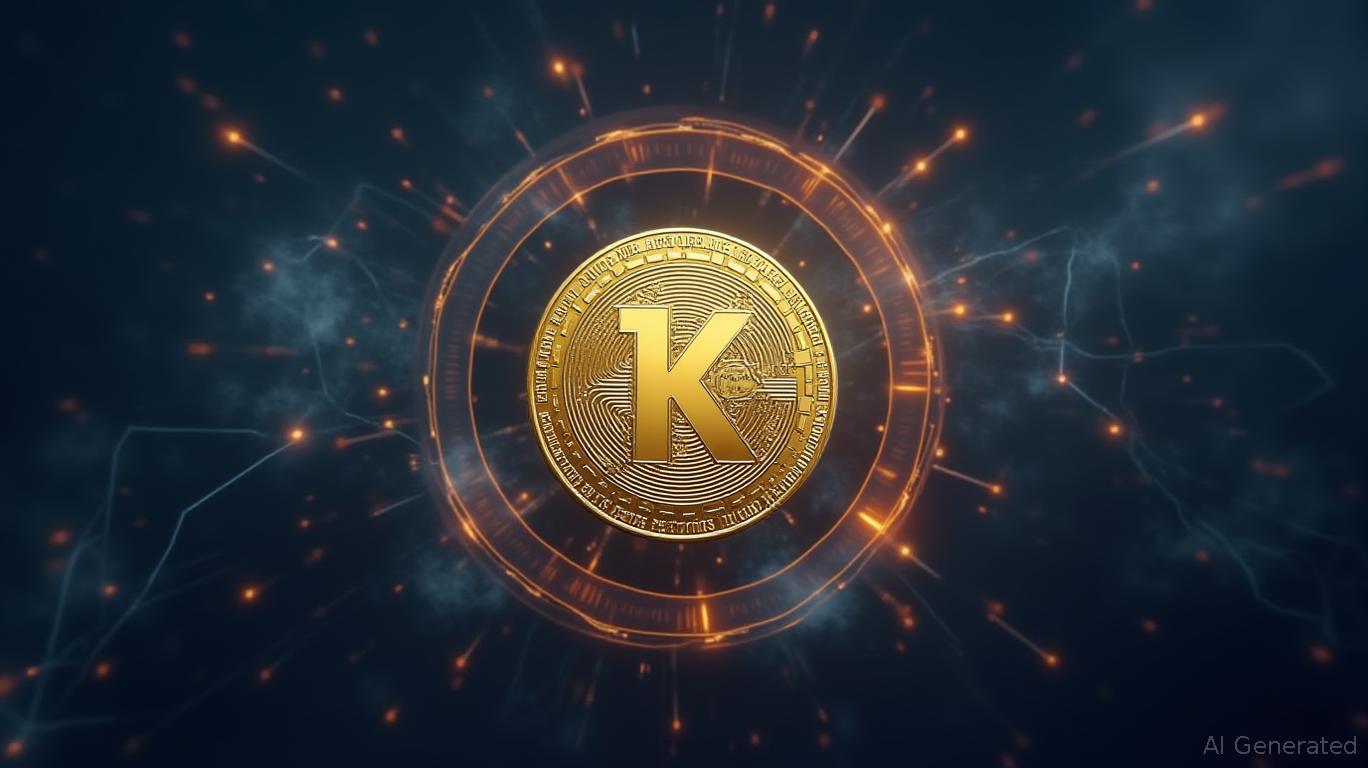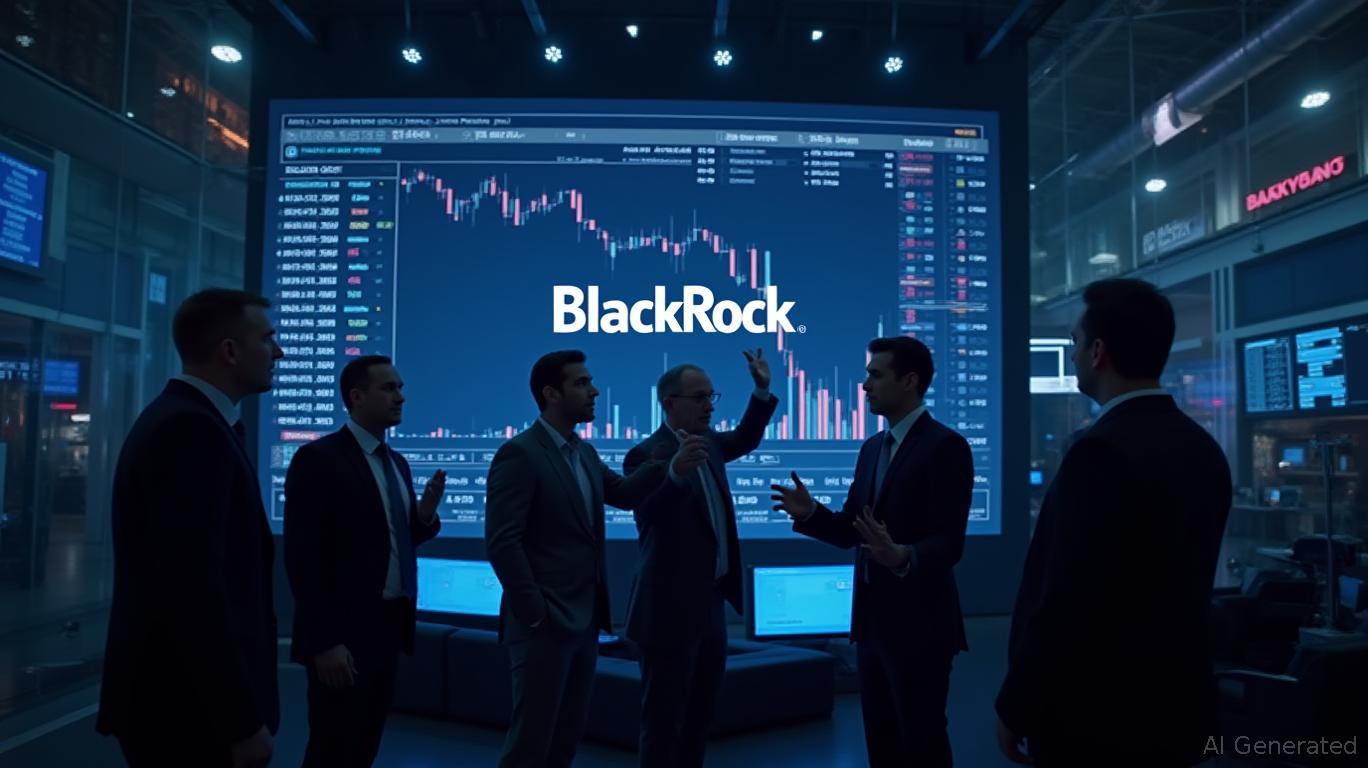MiCA’s Stablecoin Safeguards Could Trigger Widespread Systemic Failure
- EU's MiCA regulation aims to stabilize crypto but risks enabling systemic crises by overlooking macroeconomic risks from stablecoin integration with traditional finance. - Stablecoins now compete with banks via liquidity and zero-volatility traits, threatening to distort monetary policy as funds shift to crypto-backed tokens. - BoE warns of shadow-banking risks from offshore stablecoins and calls for bank-like regulation, while UK's FCA creates jurisdictional loopholes through regulatory arbitrage. - DeF
The Markets in Crypto-Assets (MiCA) regulation in Europe, celebrated as a major step toward bringing order to the unpredictable crypto sector, might unintentionally be setting the stage for future financial instability. Although the regulation enforces requirements like proof-of-reserves, capital reserves, and redemption protections for stablecoins, some critics say it overlooks broader systemic dangers that could arise as these digital currencies become more intertwined with conventional financial systems, as
Stablecoins are evolving from specialized crypto assets into widely used payment methods, transforming the financial landscape. By replicating features of bank deposits—such as easy access, liquidity, and minimal price fluctuation—stablecoins are now directly competing with established banks. This development could disrupt how monetary policy is implemented, as capital shifts from traditional banks to crypto tokens backed by short-term government securities, the Coindesk article cautions. The Bank of England (BoE) has already highlighted this threat, with Governor Andrew Bailey suggesting that stablecoins should face similar regulations as banks and proposing limits on how much can be held to reduce systemic risk, the article further reports.

Adding to the complexity is the expansion of decentralized finance (DeFi), which
The issue is made worse by regulatory loopholes. The UK's Financial Conduct Authority (FCA) has taken a careful approach to domestic stablecoins but is more lenient with those issued abroad, leaving users exposed to risks outside its control, the Coindesk commentary notes. This gap encourages issuers to move their operations overseas while still serving UK customers, effectively recreating the shadow-banking risks regulators aimed to eliminate, the article adds.
MiCA’s main weakness is its belief that proof-of-reserves alone guarantees stability. Even fully backed stablecoins can spark liquidity crises if there’s a rush to redeem or can worsen shocks if holders treat them as if they’re insured deposits, the Coindesk commentary warns. The regulation also lacks measures to address the risk of currency substitution, where tokens pegged to the U.S. dollar could lead to unofficial dollarization in countries outside the U.S., the article observes.
The dual nature of stablecoins—combining the efficiency of DeFi with the trust of traditional finance—creates distinct challenges. Unlike bank deposits, stablecoins are digital assets, but their widespread use blurs the boundary between private assets and public money, the Coindesk commentary explains. Policymakers such as the BoE and U.S. legislators behind the GENIUS Act are aware of these dangers, but there is still no comprehensive approach to tackle them, the article concludes.
As stablecoins continue to grow, there is an urgent need for broader regulatory tools—like caps on issuance, liquidity support, or crisis management mechanisms. Without such measures, MiCA could end up being remembered not for preventing crises, but for triggering the next major financial disruption, the Coindesk commentary warns.
Disclaimer: The content of this article solely reflects the author's opinion and does not represent the platform in any capacity. This article is not intended to serve as a reference for making investment decisions.
You may also like
Regulatory Concerns Intensify with the Introduction of South Korea's KRW1 Stablecoin into Arc's International Network
- Circle's Arc blockchain, designed as an "economic operating system," offers sub-second finality and USDC-based fees to streamline global finance. - South Korea's BDACS plans to deploy KRW1, a won-pegged stablecoin on Arc's testnet, bridging Korean markets to global stablecoin networks. - Arc's testnet has attracted 100+ institutions including BlackRock and Visa, aiming to redefine cross-border payments and asset tokenization. - Regulatory debates persist as South Korea's Bank of Korea proposes restrictin

Bitcoin News Update: BlackRock's ETF Supremacy Raises Concerns for Altcoin Futures
- BlackRock's iShares Bitcoin Trust ETF dominated 2025 with $28.1B inflows, overshadowing $1.27B outflows from other spot Bitcoin ETFs. - Altcoin ETFs face uncertainty without BlackRock's support, despite JPMorgan/Bitget's $3–8B inflow projections for Solana and XRP. - DeFi innovation advanced via Avalanche's BTC.b bridging, while Blazpay and BullZilla presales attracted $1M+ in speculative capital. - Bitcoin traded near $110,000 amid $488M ETF outflows, with Saylor forecasting $150,000 by year-end driven

Romania Prohibits Unregulated Prediction Markets, Classifying Them as Gambling
- Romania's ONJN banned unlicensed prediction market Polymarket, classifying its user-driven bets on real-world events as gambling requiring a license. - Regulators warned that treating counterparty betting as "trading" creates legal risks for player protection, AML compliance, and state revenue collection. - The crackdown follows $600M+ in wagers on Romanian elections and joins bans in France, Belgium, and the U.S., where Polymarket faces EU licensing hurdles. - Despite securing a CFTC-licensed exchange a

Monero Faces a $342 Test: The Assurance of Privacy Against Widespread Doubt
- Monero (XMR) trades near $342, with traders monitoring key support/resistance levels amid mixed sentiment. - Analysts highlight $342 as a critical threshold; breakouts could drive bullish momentum, while dips below $325 risk corrections. - Privacy coin faces challenges from regulatory uncertainty and cautious institutional adoption despite growing DeFi use cases. - Broader crypto market shows mixed trends, with NFT sales declining and tech stocks like Nvidia surging.
